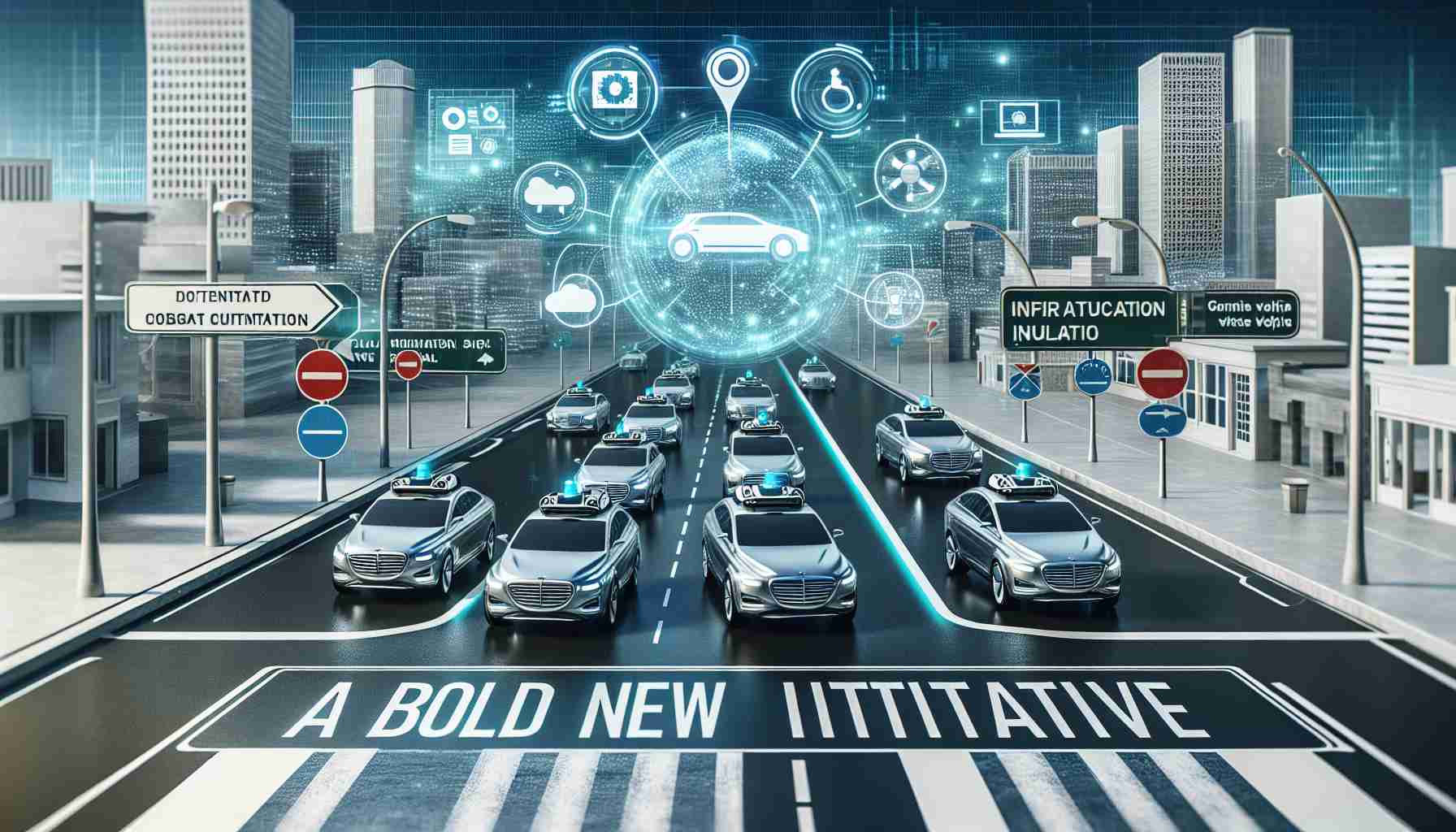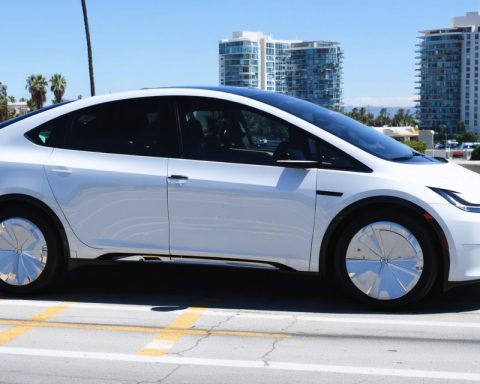The Rise of Autonomous Vehicles: A Game Changer for America
On January 7, 2024, the Autonomous Vehicle Industry Association (AVIA) unveiled a pivotal federal policy initiative titled “Securing American Leadership in Autonomous Vehicles.” This robust framework calls for decisive federal measures to enhance the U.S.’s competitive edge in autonomous vehicle (AV) technology. It aims to bolster safety standards, drive innovation, and ensure economic sustainability.
The need for federal action is underscored by growing global competition, particularly with advancements made by countries like China. As the AV industry thrives, experts emphasize the necessity for a cohesive national policy to protect and enhance the benefits of AVs in areas like road safety and supply chain efficiency.
Key aspects of AVIA’s recommendations include the establishment of a National AV Safety Data Repository for greater transparency in incident reporting and the modernization of vehicle safety regulations to embrace levels of automation previously unaddressed. Moreover, the initiative encourages legislative support for cybersecurity and accessibility to maximize the potential of autonomous technologies.
AVIA’s framework aims to safeguard national security through the promotion of domestic manufacturing of essential AV components. By equipping regulators with increased resources, the proposal also seeks to ensure that AV technologies are safely integrated into the American transportation landscape, guiding the nation towards a future where autonomous vehicles are a standard part of daily life.
The Broader Implications of Autonomous Vehicles
The rise of autonomous vehicles (AVs) carries profound implications for society, culture, and the global economy. As we move towards a future dominated by AV technology, the effects will stretch far beyond the realm of transportation. With the potential to drastically reduce traffic accidents—reportedly, 94% of crashes are due to human error—AVs promise to enhance road safety, thus reshaping societal norms surrounding vehicle ownership and personal accountability.
Culturally, the integration of AVs could redefine urban landscapes. As cities adapt infrastructure to accommodate self-driving cars, we may see the decline of traditional parking spaces, giving way to green public spaces and pedestrian-friendly developments. This shift may cultivate a culture of reduced dependency on private car ownership, promoting more sustainable urban living.
Economically, the benefits extend to significant job creation in tech and manufacturing sectors dedicated to AV development. However, there is a looming concern: jobs in traditional driving roles may diminish, necessitating comprehensive workforce retraining programs. Additionally, the scalability of AV technology could enable developing nations to leapfrog traditional automotive patterns, potentially leading to a new era of global mobility.
In terms of environmental impact, AVs could contribute to more efficient traffic flow and lower emissions, aligning with global sustainability goals. Ultimately, the long-term significance of autonomous vehicles will hinge on careful policy-making, public acceptance, and a commitment to equitable access, ensuring that the benefits of this technological revolution are universally shared.
Transforming Transportation: How Autonomous Vehicles Are Shaping the Future
The Rise of Autonomous Vehicles: A Game Changer for America
The autonomous vehicle (AV) industry is poised for a major transformation, promising not only to revolutionize transportation but also to significantly impact the economy. As outlined in the recent report by the Autonomous Vehicle Industry Association (AVIA), the U.S. is taking crucial steps to secure its position as a global leader in AV technology.
Key Features of AVIA’s Initiative
1. National AV Safety Data Repository: One of the cornerstones of this new policy is the establishment of a comprehensive database that enhances incident reporting and accelerates the understanding of safety challenges associated with AVs. This repository will serve as a centralized resource for safety data, greatly improving transparency and fostering trust in AV technology.
2. Modernized Safety Regulations: The AVIA framework looks to update existing vehicle safety regulations, creating guidelines to address emerging levels of automation, including full autonomy. This evolution is critical as manufacturers introduce increasingly sophisticated vehicle technologies.
3. Cybersecurity Initiatives: Recognizing the potential risks associated with connected vehicles, the initiative pushes for enhanced cybersecurity measures. Ensuring robust protection against cyber threats is essential to safeguard user data and maintain public confidence in AV systems.
4. Boosting Domestic Manufacturing: By promoting the domestic production of essential AV components, the framework aims to enhance national security and bolster the economy. This shift could lead to job creation and sustain the economic environment surrounding the autonomous vehicle market.
Pros and Cons of Autonomous Vehicles
Pros:
– Increased Safety: AVs are designed to reduce human error, which is responsible for the vast majority of traffic accidents.
– Efficiency: Autonomous vehicles can optimize traffic flow, reducing congestion and lowering commute times.
– Accessibility: AVs hold the promise of providing mobility solutions for those unable to drive, including the elderly and disabled.
Cons:
– Job Displacement: The shift towards automation may result in job losses in driving professions, raising concerns about economic displacement.
– Technology Gaps: Ensuring equitable access to AV technology can be challenging, particularly for underserved communities.
– Regulatory Challenges: The rapid advancement of AV technology poses difficulties in creating comprehensive regulations that can keep pace with innovation.
Use Cases for Autonomous Vehicles
1. Public Transportation: Cities worldwide are exploring AVs for public transit, potentially offering a cost-effective and efficient alternative to traditional buses.
2. Delivery Services: Companies like Amazon and Walmart are testing AVs for last-mile delivery, striving to minimize delivery times and reduce operational costs.
3. Ridesharing: AV technology is expected to transform ridesharing services, paving the way for fleets of autonomous taxis.
Market Trends and Insights
As of 2024, the global autonomous vehicle market is expected to witness exponential growth. Factors contributing to this trend include technological advancements in artificial intelligence, increasing investments in infrastructure, and a growing emphasis on reducing carbon footprints in transportation.
Key players in the market are also exploring partnerships and collaborations to enhance vehicle capabilities and expand their market reach. For example, collaborations between tech companies and automotive manufacturers are leading to innovative AV solutions that leverage cutting-edge research and technology.
Limitations and Challenges Ahead
Despite the optimistic outlook, the AV industry faces substantial hurdles, including regulatory uncertainties and public skepticism towards the safety of autonomous systems. Ongoing research is essential to address these challenges and to foster a more informed dialogue between stakeholders, including the government, industry leaders, and the public.
Looking Ahead: The Future of Autonomous Vehicles
Predictions for the future of autonomous vehicles suggest that widespread adoption could dramatically impact urban planning, environmental sustainability, and overall transportation systems. As AV technologies mature, they are likely to integrate with smart city initiatives, enabling a more connected and efficient urban infrastructure.
In conclusion, the AVIA’s initiative represents a significant step towards shaping the future landscape of transportation in the United States. As the industry evolves, its implications will extend beyond technology to influence social, economic, and regulatory spheres.
For more updates on autonomous vehicle policies and innovations, visit the AVIA website.

















